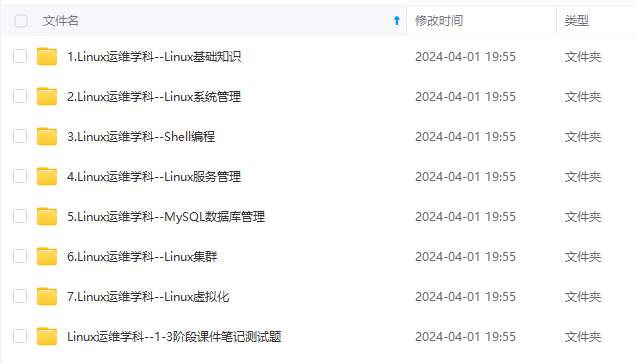k8s安全 认证 鉴权 准入控制之二:授权(Authorization)
系列文章链接k8s安全 认证 鉴权 准入控制之一:认证(Authentication)k8s安全 认证 鉴权 准入控制之二:授权(Authorization)授权(Authorization)·上面认证过程,只是确认通信的双方都确认了对方是可信的,可以相互通信。而鉴权是确定请求方有哪些资源的权 限。API Server 目前支持以下几种授权策略 (通过 API Server 的启动参数 “–aut
系列文章链接
- k8s安全 认证 鉴权 准入控制之一:认证(Authentication)
- k8s安全 认证 鉴权 准入控制之二:授权(Authorization)
- k8s安全 认证 鉴权 准入控制之三:实践
- k8s安全 认证 鉴权 准入控制之四:准入控制
授权(Authorization)
·上面认证过程,只是确认通信的双方都确认了对方是可信的,可以相互通信。而鉴权是确定请求方有哪些资源的权 限。API Server 目前支持以下几种授权策略 (通过 API Server 的启动参数 “–authorization-mode” 设置)
默认使用RBAC
- AlwaysDeny:表示拒绝所有的请求,一般用于测试
- AlwaysAllow:允许接收所有请求,如果集群不需要授权流程,则可以采用该策略
- ABAC(Attribute-Based Access Control):基于属性的访问控制,表示使用用户配置的授权规则对用户 请求进行匹配和控制
- Webbook:通过调用外部 REST 服务对用户进行授权
- RBAC(Role-Based Access Control):基于角色的访问控制,现行默认规则
RBAC 授权模式
RBAC(Role-Based Access Control)基于角色的访问控制,在 Kubernetes 1.5 中引入,现行版本成为默认标
准。相对其它访问控制方式,拥有以下优势:
-
对集群中的资源和非资源均拥有完整的覆盖
-
整个 RBAC 完全由几个 API 对象完成,同其它 API 对象一样,可以用 kubectl 或 API 进行操作
-
可以在运行时进行调整,无需重启 API Server
I、RBAC 的 API 资源对象说明
RBAC 引入了 4 个新的顶级资源对象:Role、ClusterRole、RoleBinding、ClusterRoleBinding,4 种对象类型
均可以通过 kubectl 与 API 操作

kubernetes采用http c/s结构开发,restful接口create ,get ,update 这些动作都赋予到Role角色上,然后通过RoleBinding绑定给User(用户)或者Group(组)再或者ServiceAccount
资源(Pod,deployment, service,CPU,内存)非资源(元数据信息,比如Pod状态)
Role:只能对一个namespace有权限,如果要跨权限,需要定义ClusterRole
ClusterRole:集群级别的角色
RoleBinding:能绑定Role和ClusterRole
ClusterRoleBinding:只能绑定ClusterRole
需要注意的是 Kubenetes 并不会提供用户管理,那么 User、Group、ServiceAccount 指定的用户又是从哪里 来的呢? Kubenetes 组件(kubectl、kube-proxy)或是其他自定义的用户在向 CA 申请证书时,需要提供一个 证书请求文件
{
"CN": "admin",
"hosts": [],
"key": {
"algo": "rsa",
"size": 2048
},
"names": [
{
"C": "CN",
"ST": "HangZhou",
"L": "XS",
"O": "system:masters",
"OU": "System"
}
]
}
API Server会把客户端证书的 CN 字段作为User,把 names.O字段作为Group
kubelet 使用 TLS Bootstaping 认证时,API Server 可以使用 Bootstrap Tokens 或者 Token authentication file 验证 =token,无论哪一种,Kubenetes 都会为 token 绑定一个默认的 User 和 Group Pod使用 ServiceAccount 认证时,service-account-token 中的 JWT 会保存 User 信息
有了用户信息,再创建一对角色/角色绑定(集群角色/集群角色绑定)资源对象,就可以完成权限绑定了
Role and ClusterRole
在 RBAC API 中,Role 表示一组规则权限,权限只会增加(累加权限),不存在一个资源一开始就有很多权限而通过 RBAC 对其进行减少的操作;Role 可以定义在一个 namespace 中,如果想要跨 namespace 则可以创建ClusterRole
kind: Role
apiVersion: rbac.authorization.k8s.io/v1beta1
metadata:
namespace: default
name: pod-reader
rules:
- apiGroups: [""] # "" indicates the core API group
resources: ["pods"]
verbs: ["get", "watch", "list"]
ClusterRole 具有与 Role 相同的权限角色控制能
力,不同的是 ClusterRole 是集群级别的,ClusterRole 可以用 于:
- 集群级别的资源控制( 例如 node 访问权限 )
- 非资源型 endpoints( 例如 /healthz 访问 )
- 所有命名空间资源控制(例如 pods )
kind: ClusterRole
apiVersion: rbac.authorization.k8s.io/v1beta1
metadata:
# "namespace" omitted since ClusterRoles are not namespaced
name: secret-reader
rules:
- apiGroups: [""]
resources: ["secrets"]
verbs: ["get", "watch", "list"]
RoleBinding and ClusterRoleBinding
是对用户或者组进行角色权限的绑定关联
RoloBinding 可以将角色中定义的权限授予用户或用户组,RoleBinding 包含一组权限列表(subjects),权限列 表中包含有不同形式的待授予权限资源类型(users, groups, or service accounts);RoloBinding 同样包含对被 Bind 的 Role 引用;RoleBinding 适用于某个命名空间内授权,而 ClusterRoleBinding 适用于集群范围内的授 权
将 default 命名空间的 pod-readerRole 授予 jane 用户,此后 jane 用户在 default 命名空间中将具有 pod- reader的权限
kind: RoleBinding
apiVersion: rbac.authorization.k8s.io/v1beta1
metadata:
name: read-pods
namespace: default
subjects:
- kind: User
name: jane
apiGroup: rbac.authorization.k8s.io
roleRef:
kind: Role
name: pod-reader
apiGroup: rbac.authorization.k8s.io
RoleBinding 同样可以引用 ClusterRole 来对当前 namespace 内用户、用户组或 ServiceAccount 进行授权, 这种操作允许集群管理员在整个集群内定义一些通用的 ClusterRole,然后在不同的 namespace 中使用 RoleBinding 来引用
例如,以下 RoleBinding 引用了一个 ClusterRole,这个 ClusterRole 具有整个集群内对 secrets 的访问权限; 但是其授权用户 dave 只2能访问 development 空间中的 secrets(因为 RoleBinding 定义在 development 命 名空间)
# This role binding allows "dave" to read secrets in the "development" namespace.
kind: RoleBinding
apiVersion: rbac.authorization.k8s.io/v1beta1
metadata:
name: read-secrets
namespace: development # This only grants permissions within the "development" namespace. subjects:
- kind: User
name: dave
apiGroup: rbac.authorization.k8s.io roleRef:
kind: ClusterRole
name: secret-reader
apiGroup: rbac.authorization.k8s.io
使用 ClusterRoleBinding 可以对整个集群中的所有命名空间资源权限进行授权;以下 ClusterRoleBinding 样例 展示了授权 manager 组内所有用户在全部命名空间中对 secrets 进行访问
# This cluster role binding allows anyone in the "manager" group to read secrets in any namespace.
kind: ClusterRoleBinding
apiVersion: rbac.authorization.k8s.io/v1beta1
metadata:
name: read-secrets-global
subjects:
- kind: Group
name: manager
apiGroup: rbac.authorization.k8s.io roleRef:
kind: ClusterRole
name: secret-reader
apiGroup: rbac.authorization.k8s.io
Resources
Kubernetes 集群内一些资源一般以其名称字符串来表示,这些字符串一般会在 API 的 URL 地址中出现;同时某些
资源也会包含子资源,例如 logs 资源就属于 pods 的子资源,API 中 URL 样例如下
GET /api/v1/namespaces/{namespace}/pods/{name}/log
如果要在 RBAC 授权模型中控制这些子资源的访问权限,可以通过 / 分隔符来实现,以下是一个定义 pods 资资源 logs 访问权限的 Role 定义样例
kind: Role
apiVersion: rbac.authorization.k8s.io/v1beta1 metadata:
namespace: default
name: pod-and-pod-logs-reader rules:
- apiGroups: [""] resources: ["pods/log"] verbs: ["get", "list"]
to Subjects
RoleBinding 和 ClusterRoleBinding 可以将 Role 绑定到 Subjects;Subjects 可以是 groups、users 或者 service accounts
Subjects 中 Users 使用字符串表示,它可以是一个普通的名字字符串,如 “alice”;也可以是 email 格式的邮箱 地址,如 “wangyanglinux@163.com”;甚至是一组字符串形式的数字 ID 。但是 Users 的前缀 system: 是系统 保留的,集群管理员应该确保普通用户不会使用这个前缀格式
Groups 书写格式与 Users 相同,都为一个字符串,并且没有特定的格式要求;同样 system: 前缀为系统保留
更多推荐
 已为社区贡献10条内容
已为社区贡献10条内容









所有评论(0)